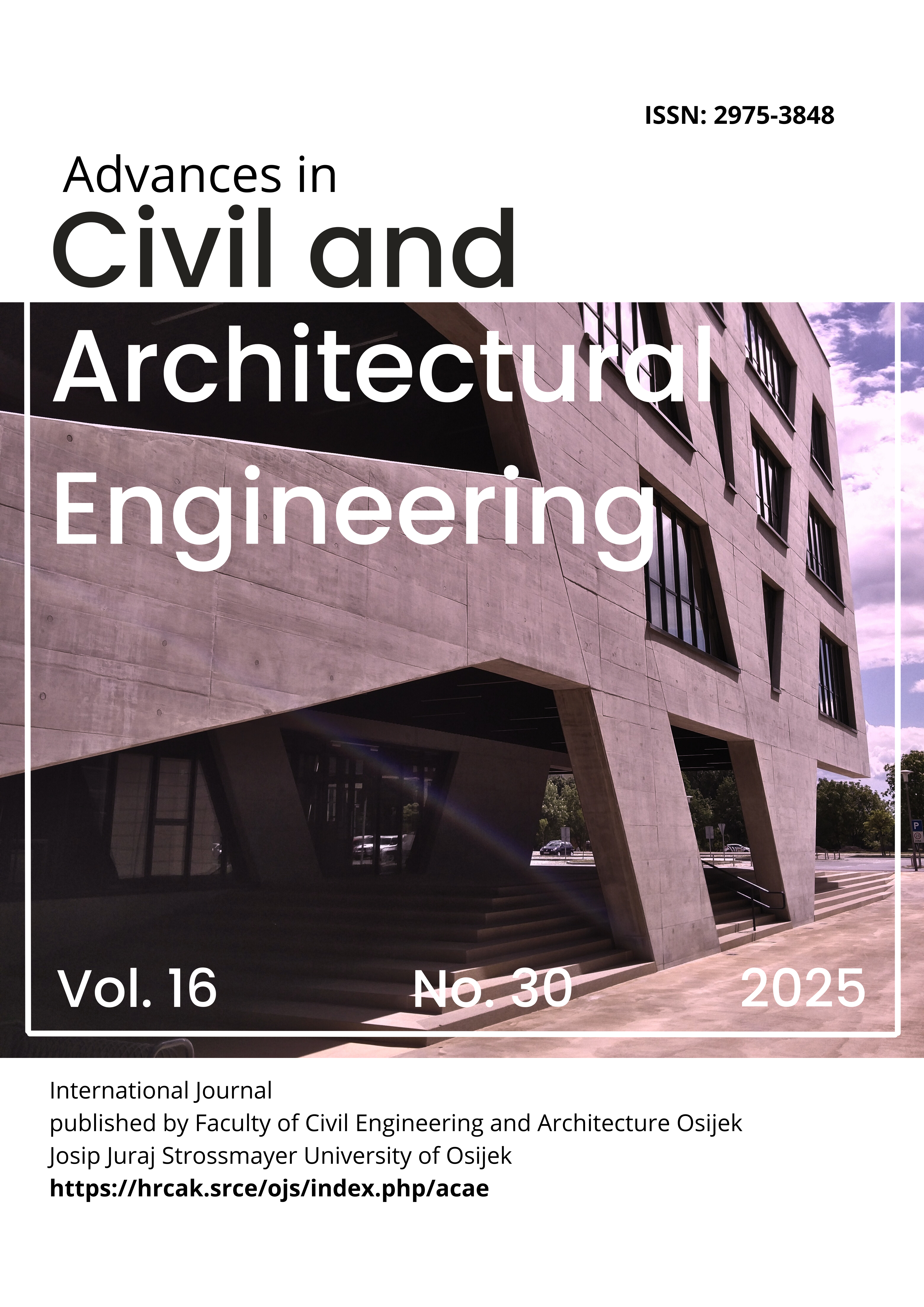Effect of fibres on the interfacial shear strength of geopolymer concrete activated with water glass
DOI:
https://doi.org/10.13167/2025.30.3Keywords:
compressive strength, shear strengt, geopolymer concrete, GGBS, fly ashAbstract
Cement, an important component of concrete, is used in construction. Unfortunately, the production of cement, releases considerable amounts of CO2 into the atmosphere. CO2 is the primary greenhouse gas responsible for global warming and finding alternatives to cement is essential to reduce CO2 emissions. Geopolymers are promising alternative binders that can completely replace ordinary Portland cement. Building large-scale structures with mass concrete leads to the formation of interfaces and joints, creating potential weak points that are prone to cracking. These connections may link concrete of different strengths or interface with different construction materials, such as steel. Ensuring cohesive performance in composite concrete structures requires a robust bond at these interfaces, which is usually achieved using shear ties. However, an excess of such ties can compromise the efficiency of the construction. To address these challenges in terms of design effectiveness and structural stability, this paper focuses on evaluating the interfacial shear strength of geopolymer concrete with and without the addition of polypropylene, steel and glass fibres. It was found that w the strength increased with the addition of fibres up to the threshold limit value and decreased thereafter. The test results show that the shear strength of steel fibre reinforced geopolymer concrete (GPC) the shear strength increment is maximum 72 %, increases by a maximum of 72 %, compared to 19 % for glass fibres.
Downloads
Published
Issue
Section
License
Copyright (c) 2025 Rajashekar Sangi; Sesha Sreenivas Bollapragada

This work is licensed under a Creative Commons Attribution 4.0 International License.

